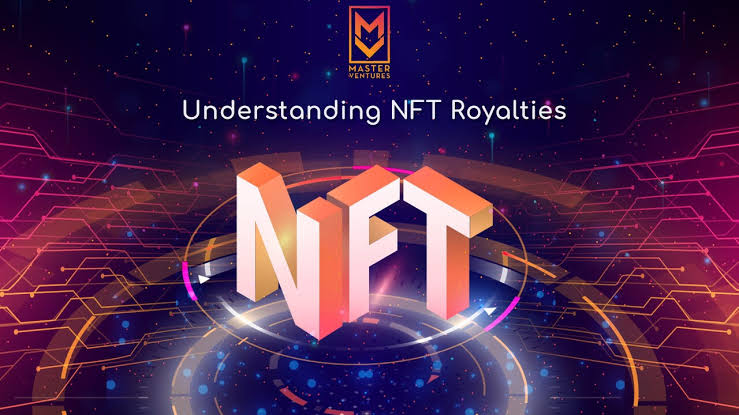Non-fungible tokens (NFTs) have completely changed the way that musicians, artists, and other creators of creative content sell and profit from their creations.NFT royalties, which enable them to get ongoing payment for their work, are one of the ways they make money.Royalty payments, sometimes known as royalties, have played a key role in the overall financial environment.Royalties are sums of money given to another party in exchange for using their asset.
In this Article, we’ll discuss about NFT Royalty, how it works The need for NFT royalties, as well as it pros and Cons
What Is an NFT Royalty?
When a piece of work is resold, the creator or original owner is given a portion of the sale price known as an NFT royalty.In essence, this functionality enables producers to make money off their NFTs long after the first sale.NFT royalties are designed to give producers of digital music, art, and other goods a reliable stream of income.Additionally, they give artists and other creators a way to profit from the rising value of their works when they are purchased and resold on the secondary market, creating a new source of income in the age of digital creation.
The rules for royalty payments with an NFT are coded on smart contracts available in blockchain networks. Creators could set the percentage of the royalty payment in the minting stages. When a secondary sale of the NFT is completed, the smart contract will allocate the specified percentage from the sale as a royalty payment to the creator.
How Do NFT Royalties Work?
The author of an NFT has the choice to specify a royalty percentage that they will get each time their NFT is sold in the future when it is first issued.The percentage can be altered to the creator’s preference; it commonly runs from 2.5% to 10%.The royalty portion is immediately subtracted from the sale price and given to the original inventor or owner when the NFT is purchased on an NFT marketplace.With the help of this tool, creators can continue to profit from their work even after it has been sold.
However, you must first mint your NFT before you can start receiving NFT royalties.To establish a distinct and secure record of ownership, you must register your digital asset on a blockchain network.Using smart contracts, you can define the sum or percentage you want to get from second-hand sales of your work during the minting process.As a result, the smart contract will automatically give you, the original owner, the predetermined percentage upon secondary sales.
The royalty system associated with NFTs is intended to provide an opportunity for creators to capitalize on the rising value of their work over time, even after the original NFT sale. This creates a long-term income stream for artists, musicians, and other creators, which can motivate them to continue producing high-quality work.
What Is the Need for NFT Royalties?
Every new technical advancement highlights the rationale for its introduction.Why do people require NFT royalties?With the help of social media and online exposure, artists might have discovered a new and broader audience for their work.It’s crucial to realize, too, that in order to support themselves, artists and content creators must constantly produce new work.
NFT royalties arrived as the solution for such issues of artists seeking sustainable business models for their future. The answers to ‘how to do NFT royalties work’ should always be preceded with an explanation for their existence in the first place. Which problems are responsible for the newfound attention on NFT royalties?
Composers, songwriters, novelists, producers, and nearly anybody involved in the creative process must fight for proper recompense, which is a challenge for artists in almost every industry.For instance, many artists are required to consent to the use of their work by streaming services in exchange for a meager royalty pay.Once a work of art is sold, the artist loses all control over any further sales or royalties.
Pros and Cons of NFT Royalty
The following are the advantages and disadvantages of Nft royalty, they are as follows;
Pros
1.NFT royalties provide creators with a way to earn ongoing revenue from their works even after they have sold them to someone else. In that way, the reward for their work won’t be a one-time benefit.
2. NFT royalties help to ensure that creators are fairly compensated for their works as they increase in value. Therefore, it enables them to earn more as the value of their work increases.
3.Royalties are automatically deducted from the sale price of an NFT, which makes it easier for creators to receive payments for their works. This is because the mode of agreement is executed on a smart contract without any intermediary; once the NFT is sold, it gets triggered automatically
Cons
4.Buyers may be less willing to pay high prices for NFTs if they know they will also have to pay royalties every time the NFT is resold. Some NFT marketplaces have made royalty payments optional; an example of such a platform is “Blur,” while platforms such as LooksRare have eliminated NFT royalty on their platform.
5. Price volatility can also impact the frequency of NFT sales, which in turn affects the royalty earnings of the creator. NFTs markets are highly unstable. Therefore, potential buyers may hesitate to invest in the asset, which can lead to a decrease in sales volume and, ultimately, lower royalty earnings.
In conclusion, despite being a relatively new concept, NFT royalties have significantly changed the art world. The advent of NFTs has provided creators with a reliable source of income, enabling them to continue their craft. Furthermore, it has opened up a new market for digital assets that were previously undervalued or ignored. As the use of NFTs grows, we can anticipate further transformations in art creation, sale, and valuation. Therefore, NFTs have not only revolutionized the art industry but also have the potential to shape the future of creative expression.

